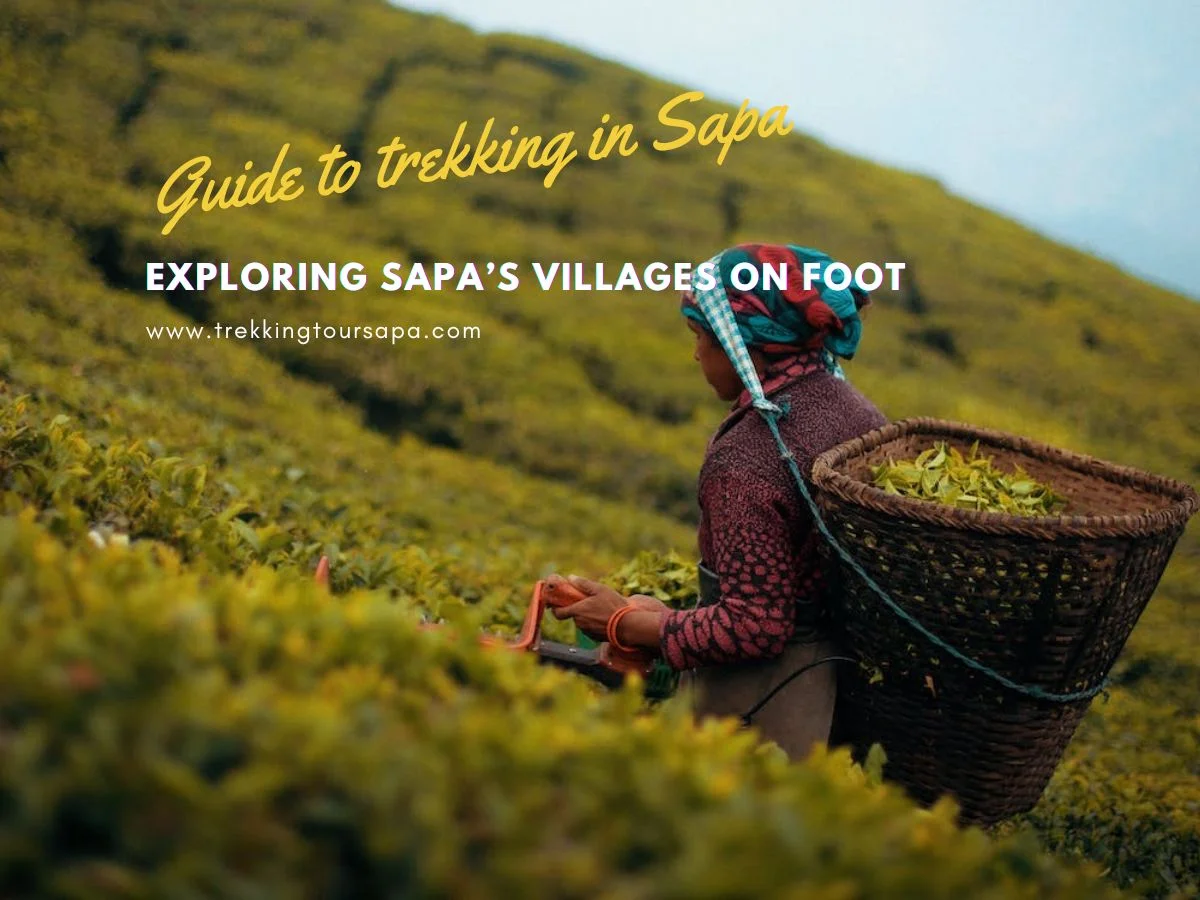Are you itching to break free from the mundane routine of your daily life and embark on an adventure that will quench your thirst for exploration? Then lace up your hiking boots and head to Sapa, a stunning mountainous region in northern Vietnam! Here, you can immerse yourself in the rich culture and breathtaking scenery by exploring the villages on foot. With each step, you’ll discover something new about the people who call this place home and gain a deeper appreciation for their way of life.
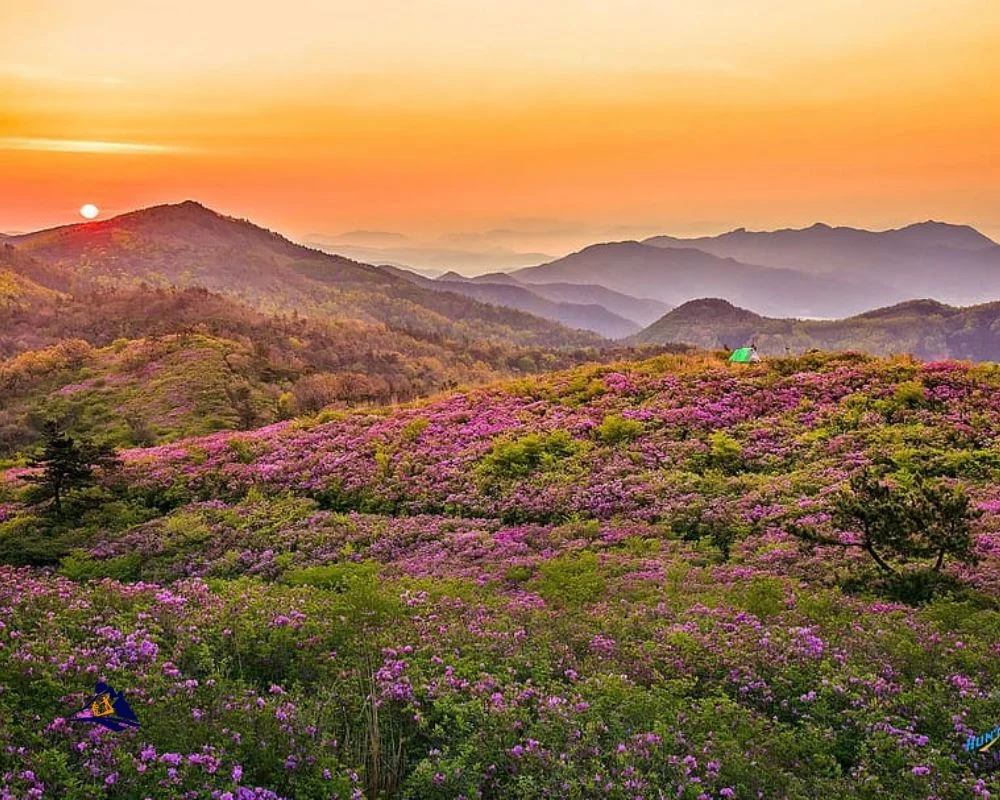
Before embarking on your journey, make sure you’re prepared for trekking through rugged terrain. Bring sturdy footwear, lightweight clothing, and plenty of water. You’ll want to be comfortable enough to enjoy every moment of this unforgettable experience. In this article, we’ll guide you through some of Sapa‘s most fascinating villages where you can meet locals from various tribes such as Hmong, Dao or Tay tribe. Get ready to discover picturesque rice terraces, shop at local markets and support sustainable tourism practices that respect both nature and communities living there.
Table of Contents
ToggleGetting to Sapa and Preparing for Your Trek
Before you hit the trails in Sapa, there are a few things to consider. Firstly, getting trekking permits is mandatory for all visitors who wish to explore the villages on foot. These can be obtained from local tour operators or the tourism office in Sapa town. Make sure to carry your passport and visa with you as it will be required when applying for the permit.
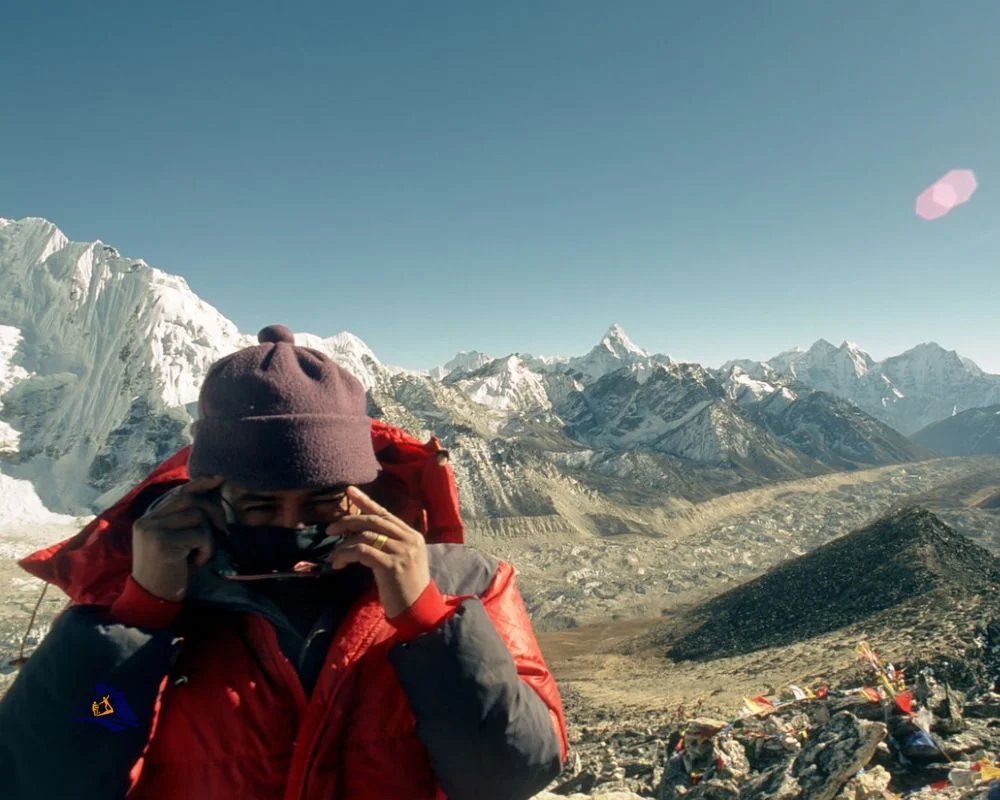
Choosing the right gear for your trek is another important factor. Pack comfortable shoes that have good grip and support as some of the terrain can be steep and slippery. A warm jacket is also essential as temperatures can drop quickly in this mountainous region, especially at night. Additionally, it may be beneficial to bring a backpack with water and snacks, sunscreen, insect repellent, and a map of the area. With these preparations taken care of, you’re now ready to embark on an unforgettable adventure through Sapa‘s picturesque landscapes!
Sapa 1 Day Tours
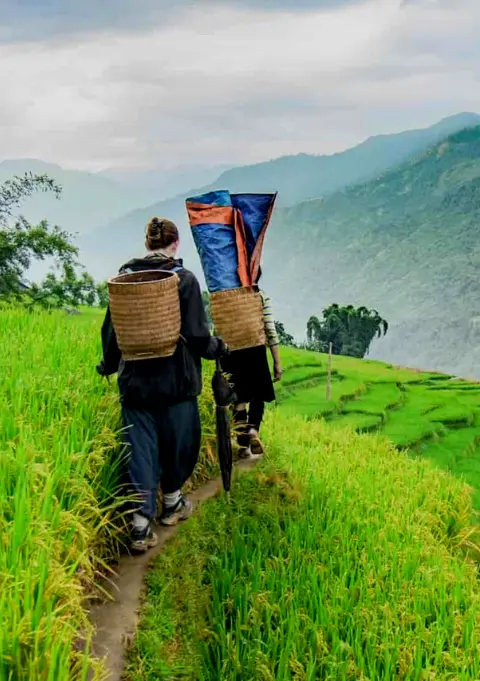
- 1 day experience
- Moderate to challenging
- Cultural immersion & active adventure
- Rice fields, valleys & villages
- Private tours
- Vegan-friendly
Sapa 2 Day Tours
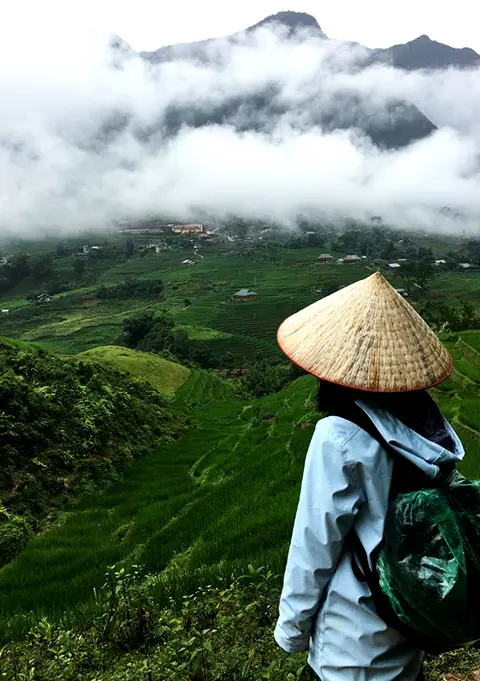
- 2 days 1 night experience
- Moderate to challenging
- Cultural immersion & active adventure
- Mountains, valleys, rice fields and villages
- Private tours
- Vegan-friendly
Sapa 3 Day Tours
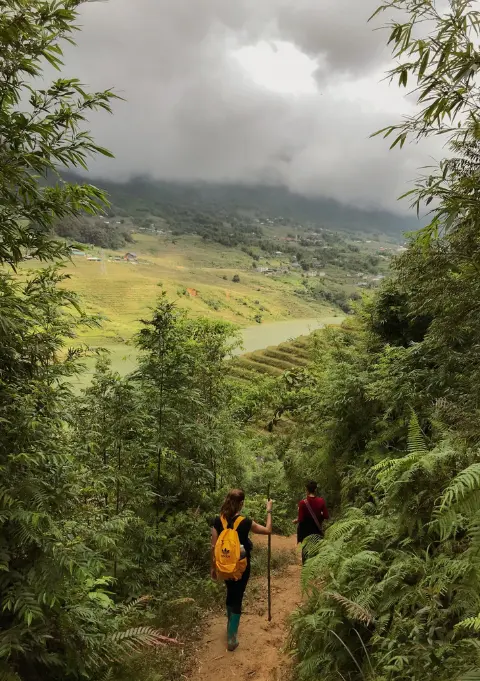
- 3 days 2 night experience
- Moderate to challenging
- Cultural immersion & active adventure
- Mountains, valley, rice fields & villages
- Private tours
- Vegan-friendly
Sapa 4 Day Tours
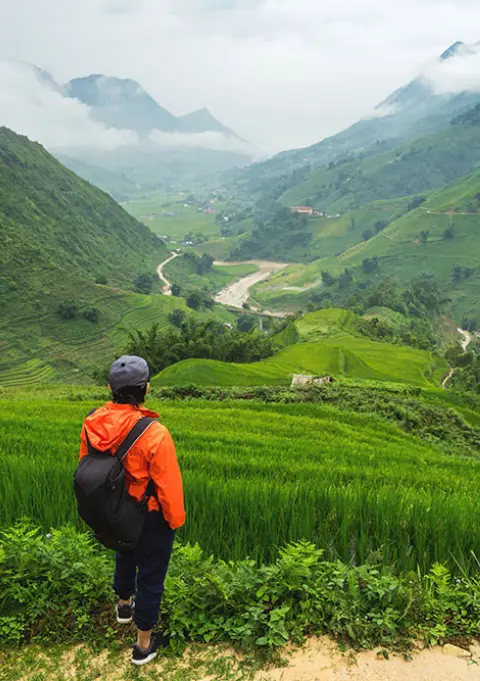
- 4 days 3 night experience
- Moderate to challenging
- Cultural immersion & active adventure
- Mountains, valleys, rice fields & villages
- Private tours – Less Touristic
- Vegan-friendly
As you begin your journey into the mountains, one of the first villages you’ll encounter is that of the Hmong tribe. This indigenous group has lived in this region for generations and retains many traditional customs despite modernization efforts by Vietnamese authorities.
The Hmong Tribe
As you delve deeper into the Hmong Tribe section, you’ll discover the rich culture and history that has kept their community thriving for generations. The Hmong tribe is known for its traditional attire, which includes intricately embroidered clothing and headwear. As you walk through their villages, you’ll notice bright pops of color from their garments against the lush green landscape.
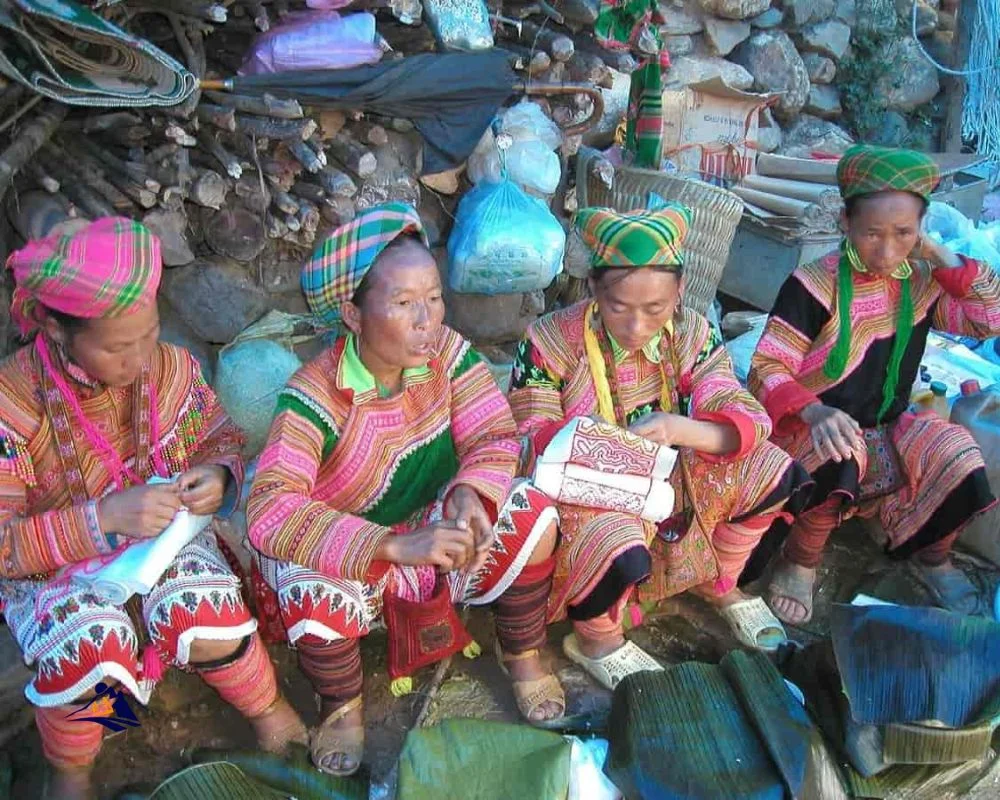
The Hmong people have a strong connection to nature and agriculture, as they often rely on farming for survival. They have cultural practices such as animal sacrifice during important events and ancestor worship. As you interact with members of the tribe, don’t be afraid to ask questions or participate in their customs – they are proud of their heritage and happy to share it with visitors. Now let’s move on to the next section where we’ll learn about another fascinating tribe in Sapa – the Dao Tribe.
The Dao Tribe
Get ready to learn about the Dao Tribe, a fascinating community in Sapa known for its unique customs and traditions. The tribe is easily recognizable by their traditional costumes, which are an important aspect of their cultural identity. The women wear long black trousers with a tunic that has colorful embroidery on the collar and cuffs. They also tie a large scarf around their head, which is adorned with silver coins, beads, and tassels. On special occasions, they wear a red turban that symbolizes good luck.
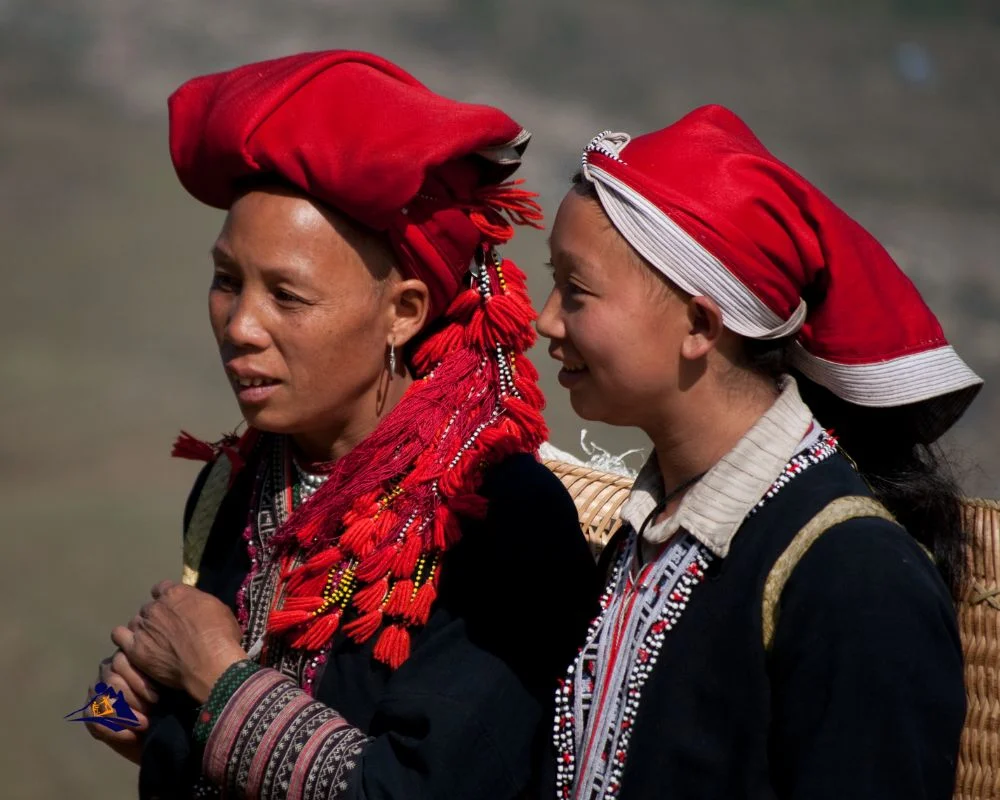
Aside from their traditional costumes, the Dao Tribe is also well-known for its handicrafts and weaving techniques. They produce stunning textiles using natural fibers such as cotton or hemp that are dyed with indigo plants to create vivid colors like blue or purple. Their intricate embroidery patterns are inspired by nature – birds, flowers, and butterflies – that represent good luck and happiness. If you’re lucky enough to visit one of the Dao villages during your trip to Sapa, don’t forget to buy some souvenirs such as scarves or bags made by these talented artisans!
As you move on from exploring the Dao Tribe’s culture and tradition through walking tours in Sapa‘s villages on foot; it’s time to discover more about another fascinating tribe -the Tay Tribe!
Sapa 1 Day Tours

- 1 day experience
- Moderate to challenging
- Cultural immersion & active adventure
- Rice fields, valleys & villages
- Private tours
- Vegan-friendly
Sapa 2 Day Tours

- 2 days 1 night experience
- Moderate to challenging
- Cultural immersion & active adventure
- Mountains, valleys, rice fields and villages
- Private tours
- Vegan-friendly
Sapa 3 Day Tours

- 3 days 2 night experience
- Moderate to challenging
- Cultural immersion & active adventure
- Mountains, valley, rice fields & villages
- Private tours
- Vegan-friendly
Sapa 4 Day Tours

- 4 days 3 night experience
- Moderate to challenging
- Cultural immersion & active adventure
- Mountains, valleys, rice fields & villages
- Private tours – Less Touristic
- Vegan-friendly
The Tay Tribe
Exploring the villages of the Tay Tribe on foot is an amazing experience that lets you witness their unique way of life. You can observe how they go about their daily activities like weaving, cooking, and farming. Their agriculture and farming practices are also fascinating to learn about as they use traditional methods that have been passed down for generations.
Village Life and Daily Activities
You’ll witness the daily life of villagers as they tend to their farms and livestock, interact with their neighbors, and carry out various tasks throughout the day. The traditional crafts of the Tay tribe are also a vital part of their daily life. You may see women weaving intricate patterns on looms or men carving wooden items such as bowls and spoons.
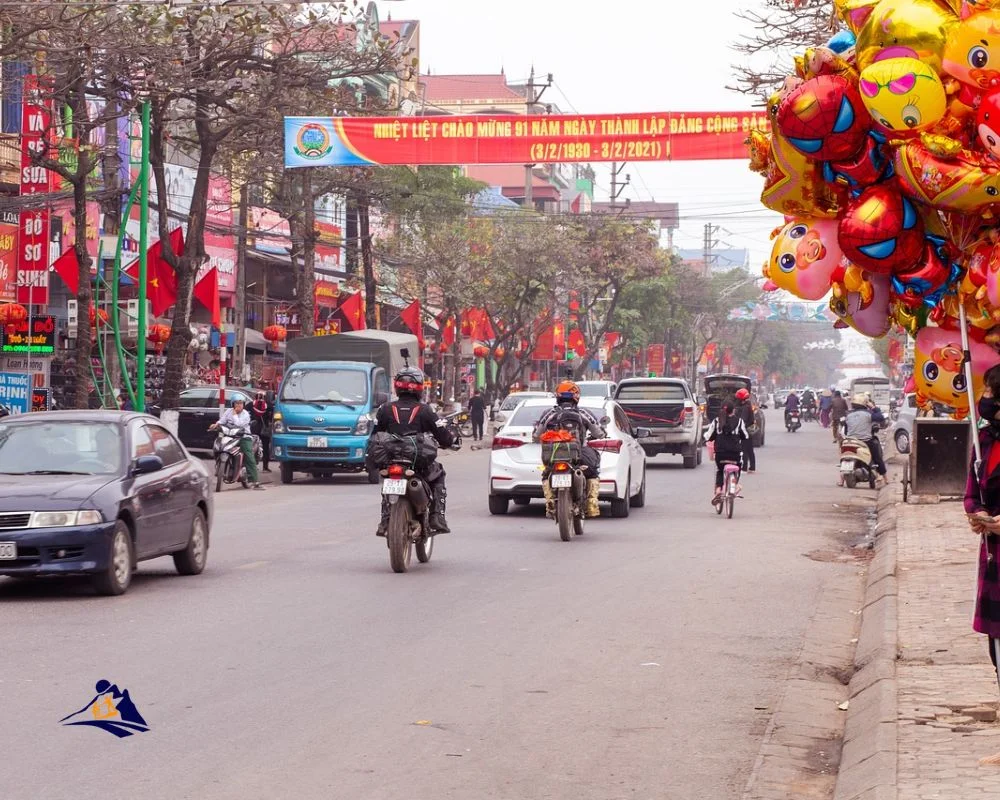
Festivals and celebrations are also an important aspect of village life in Sapa. You might be lucky enough to visit during one of these occasions where you can experience firsthand the lively music and colorful costumes that accompany them. From Tet (Lunar New Year) to the Mid-Autumn Festival, there is always something happening in these vibrant communities. As you explore Sapa’s villages on foot, take note of how these customs have been preserved over generations, making them a unique part of Vietnam’s cultural heritage.
Transitioning into the subsequent section about ‘agriculture and farming practices,’ you’ll notice that agriculture plays an integral role in village life as well. From planting rice paddies to harvesting crops, you’ll observe farmers hard at work tending to their land using age-old techniques passed down from their ancestors. So put on your walking shoes and get ready for an immersive experience in rural Vietnam!
Sapa 1 Day Tours

- 1 day experience
- Moderate to challenging
- Cultural immersion & active adventure
- Rice fields, valleys & villages
- Private tours
- Vegan-friendly
Sapa 2 Day Tours

- 2 days 1 night experience
- Moderate to challenging
- Cultural immersion & active adventure
- Mountains, valleys, rice fields and villages
- Private tours
- Vegan-friendly
Sapa 3 Day Tours

- 3 days 2 night experience
- Moderate to challenging
- Cultural immersion & active adventure
- Mountains, valley, rice fields & villages
- Private tours
- Vegan-friendly
Sapa 4 Day Tours

- 4 days 3 night experience
- Moderate to challenging
- Cultural immersion & active adventure
- Mountains, valleys, rice fields & villages
- Private tours – Less Touristic
- Vegan-friendly
Agriculture and Farming Practices
As you witness the hard work and dedication of local farmers in their agricultural practices, gain a deeper appreciation for the importance of preserving traditional techniques and the impact it has on their way of life. You’ll see farmers out in the fields tending to their crops using methods that have been passed down through generations. From planting to harvesting, they rely heavily on manual labor and carefully orchestrated timing as opposed to modern innovations in agriculture and farming practices.
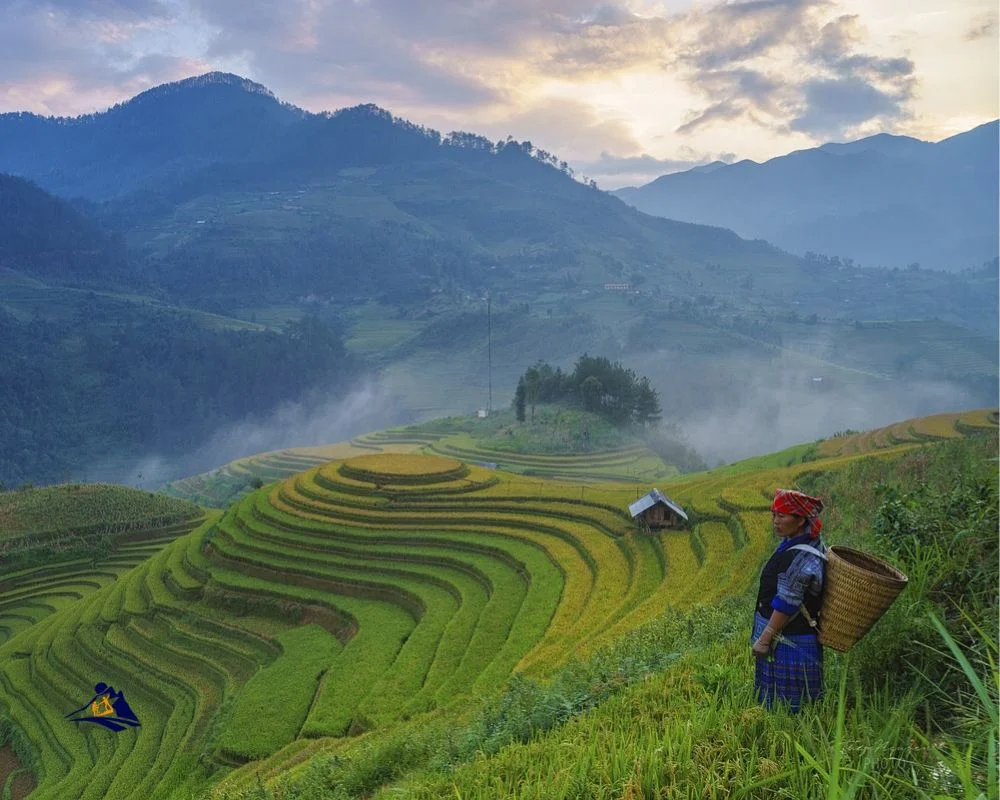
During your exploration of Sapa‘s villages, you’ll learn about the unique farming practices used by each ethnic group such as Hmong or Dao. Some may use terracing methods while others may rely on animal husbandry. However, one thing is certain – every aspect of their daily lives revolves around agriculture. From growing rice paddies to raising livestock, these communities are self-sufficient and incredibly skilled at what they do.
Exploring the Rice Terraces
- To fully appreciate the beauty of Sapa’s rice terraces, it is important to understand their history and significance to the local communities. These terraces were carved into the mountainside by hand over 700 years ago, and have since become a symbol of the region’s agricultural heritage and resilience.
- There are several routes and hiking trails that offer stunning views of the rice terraces, each with its unique charm and level of difficulty. The Muong Hoa Valley trek is a popular option for those looking for a challenging hike through remote villages and lush forests.
- For a more leisurely stroll, consider exploring some of the nearby villages on foot, where you can witness traditional ways of life up close and interact with friendly locals who are happy to share their culture with visitors. Whether you choose to hike or walk at your own pace, exploring Sapa‘s rice terraces is an unforgettable experience that will leave you in awe of nature’s beauty.

History and Significance
Now that you’ve learned about the history and significance of Sapa’s rice terraces, you’ll have a deeper appreciation for the importance of this area to the local communities. The terraces not only provide sustenance for families but also symbolize their cultural identity and traditional way of life.

Preservation of traditional practices has become increasingly vital in today’s modern world, and exploring the rice terraces on foot is one way to support this cause. By choosing to walk instead of riding a motorbike or taking a car, you are showing respect for the environment and promoting sustainable tourism. As you trek through these stunning landscapes, take a moment to reflect on the beauty around you and the rich history that has shaped it.
Best Routes and Hiking Trails
Ready for an adventure? We’ll take you through the best routes and hiking trails to fully experience the breathtaking rice terraces of Sapa’s villages. If you’re looking for popular trails, check out Cat Cat Village or Lao Chai-Ta Van Village. These routes offer stunning views of the surrounding mountains and valleys, as well as opportunities to interact with local ethnic minorities.
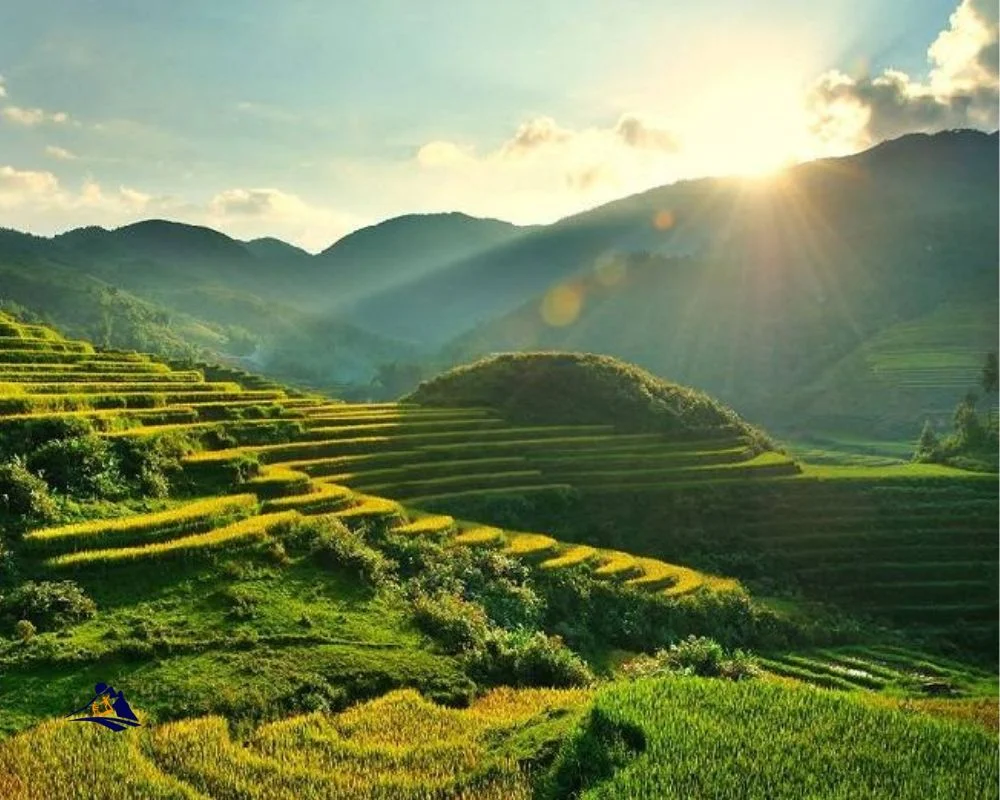
For those seeking off the beaten path routes, try trekking to Y Linh Ho Village or Ban Ho Village. While these may be more challenging hikes, they offer a chance to witness traditional rural life in Vietnam firsthand. You’ll see locals tending to their fields and livestock, and may even have the opportunity to stay in a homestay with a host family. No matter which route you choose, make sure to bring sturdy footwear and plenty of water – these hikes can be quite strenuous!
Now that you’ve explored Sapa’s villages on foot, it’s time for a different kind of adventure: visiting Sapa’s markets and local shops.
Visiting Sapa’s Markets and Local Shops
Get ready to immerse yourself in the vibrant local culture by visiting Sapa’s bustling markets and charming shops on your journey. The markets are a feast for the senses, with colorful textiles, fresh produce, and traditional crafts on display. Make sure to check out the Bac Ha Market if you’re in town on a Sunday, where locals gather from surrounding villages to sell their wares. You’ll find everything from handwoven fabrics to intricate silver jewelry here.
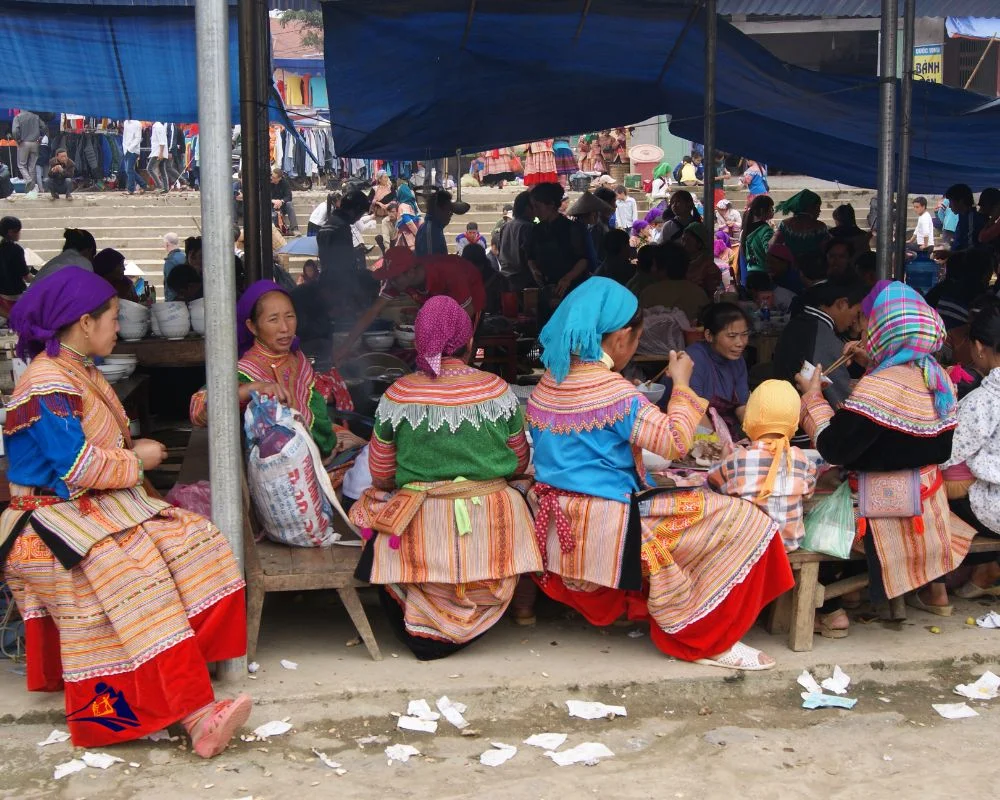
When you’re ready for a break from shopping, head over to one of Sapa’s many local eateries for some authentic cuisine. Try the famous Thang Co soup made with horse meat or sample some of the region’s delicious rice dishes. If you’re feeling adventurous, wander into one of the small shops selling local specialties like dried buffalo meat or wild honey. No matter what you choose, you’ll be supporting the local economy and getting a taste of life in rural Vietnam. Now let’s move onto enjoying the scenery and natural beauty!
Enjoying the Scenery and Natural Beauty
1) When exploring Sapa’s villages on foot, you can’t miss the stunning waterfalls and lakes that are scattered throughout the area. 2) These natural wonders offer a peaceful respite from your trek, allowing you to take in the beauty of your surroundings and snap some incredible photos. 3) Keep an eye out for wildlife and flora along the way, as Sapa is home to a diverse range of species that add even more vibrancy to this already breathtaking destination.
Waterfalls and Lakes
You’ll be in awe as you witness the natural beauty of cascading waterfalls and serene lakes in this section of Sapa’s villages. These hidden gems offer a peaceful escape from the hustle and bustle of city life, allowing you to immerse yourself in the tranquil surroundings.

Here are some tips for exploring Sapa’s waterfalls and lakes:
- Bring comfortable shoes: Most of these spots require a bit of hiking, so make sure to wear footwear that can handle rocky terrain.
- Be respectful: Many of these areas are sacred to locals, so it’s important to show respect by not littering or disturbing any offerings left behind.
- Timing is everything: The best time to visit these waterfalls is during the rainy season (May-September) when they’re at their most impressive.
- Photography tips: Capturing the beauty of Sapa’s waterfalls and lakes requires more than just pointing your camera and shooting. Play with angles, lighting, and framing to create stunning images that truly capture the essence of these natural wonders.
Sapa 1 Day Tours

- 1 day experience
- Moderate to challenging
- Cultural immersion & active adventure
- Rice fields, valleys & villages
- Private tours
- Vegan-friendly
Sapa 2 Day Tours

- 2 days 1 night experience
- Moderate to challenging
- Cultural immersion & active adventure
- Mountains, valleys, rice fields and villages
- Private tours
- Vegan-friendly
Sapa 3 Day Tours

- 3 days 2 night experience
- Moderate to challenging
- Cultural immersion & active adventure
- Mountains, valley, rice fields & villages
- Private tours
- Vegan-friendly
Sapa 4 Day Tours

- 4 days 3 night experience
- Moderate to challenging
- Cultural immersion & active adventure
- Mountains, valleys, rice fields & villages
- Private tours – Less Touristic
- Vegan-friendly
Now that you’ve explored Sapa’s waterfalls and lakes, get ready for even more natural wonders as we delve into the region’s wildlife and flora!
Wildlife and Flora
As we venture further into this section, prepare to be amazed by the diverse array of wildlife and flora that call Sapa’s stunning landscape home. Whether you’re an avid wildlife photographer or a researcher interested in floral diversity, Sapa has something for everyone. The region boasts over 2,000 plant species and is home to many endangered animals such as the Indochinese tiger and black crested gibbon.
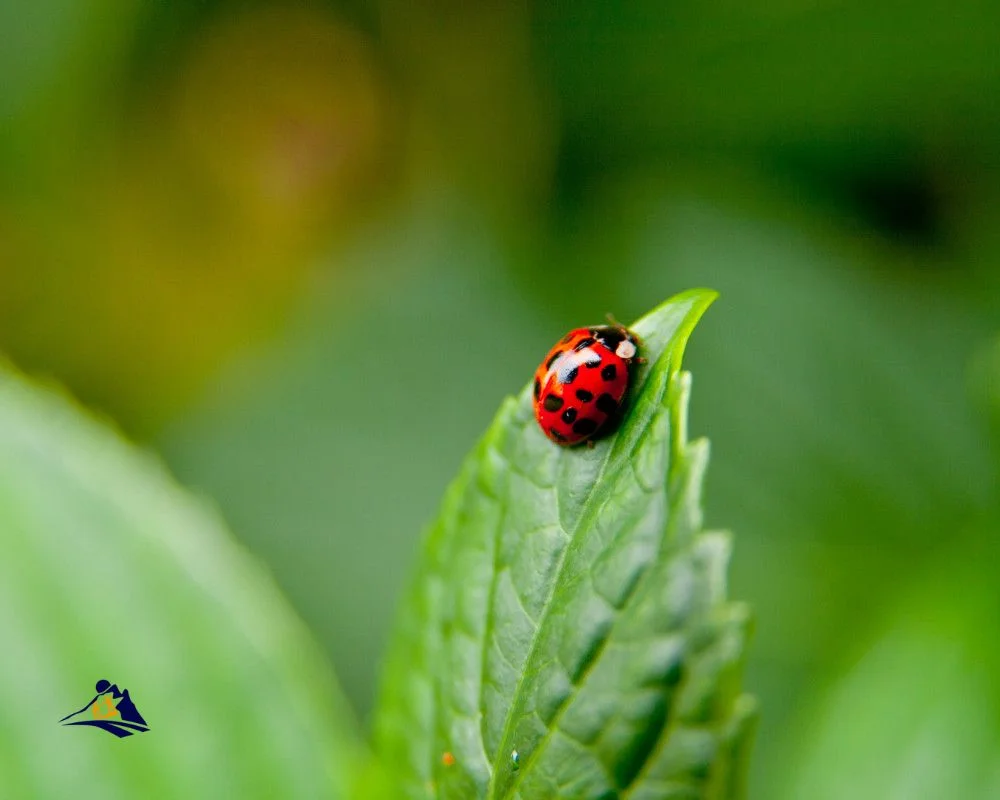
As you trek through the lush forests and rice paddies, keep an eye out for some of the unique flora such as orchids, rhododendrons, and bamboo. You’ll also have a chance to spot some of the region’s rarest animals like clouded leopards, civets, pangolins, and flying squirrels. Remember to tread lightly on your journey as responsible tourism practices are key to preserving Sapa’s natural beauty for generations to come.
Responsible Tourism and Sustainable Travel Practices
Let’s make sure we preserve the beauty of this breathtaking region by being mindful of our impact and practicing sustainable travel habits. As a responsible traveler, it is important to prioritize eco-friendly accommodations that prioritize sustainability. Look for lodgings that have implemented green practices such as using renewable energy sources, reducing water consumption, and minimizing waste.
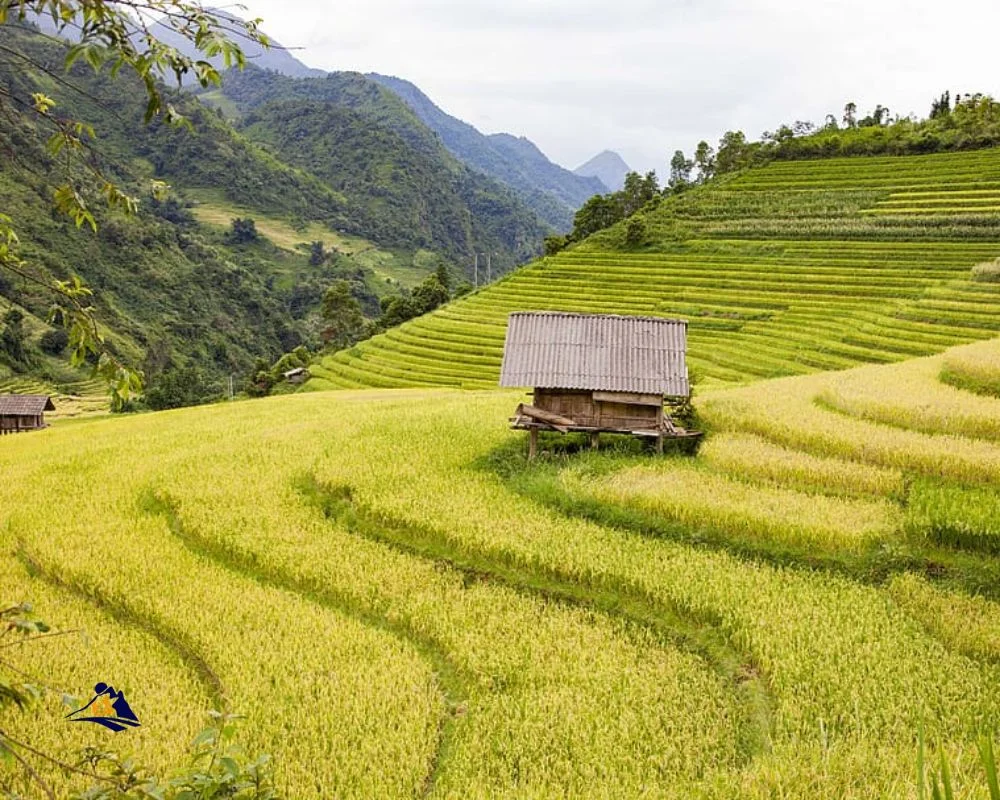
In addition to choosing eco-friendly accommodations, consider participating in community-based tourism initiatives. These initiatives not only provide unique cultural experiences but also contribute to the local economy and support the preservation of traditional ways of life. By engaging with local communities in a respectful manner, we can create positive impacts while also learning about their way of life and preserving their heritage. Let’s be responsible travelers who prioritize sustainability and support the communities we visit.
Exploring Sapa’S Villages On Foot Frequently Asked Questions
What is the best time of year to visit Sapa’s villages on foot?
The best time to visit Sapa’s villages on foot is during peak season when the weather conditions are favorable for hiking. The ideal time of year is from September to November when the rice terraces turn golden yellow and the weather is cool and dry. It’s important to wear proper footwear and pack appropriate hiking gear such as a backpack, water bottle, and snacks. With the right preparation, you can explore Sapa’s beautiful villages with ease, taking in breathtaking views of the surrounding mountains and valleys. So go ahead, embrace your adventurous spirit and plan your trip to Sapa today!
Are there any safety concerns when hiking in Sapa’s villages?
When hiking in Sapa’s villages, safety precautions should be taken seriously. While the area is generally safe, it’s important to be aware of potential hazards such as uneven terrain and slippery paths during rainy season. To ensure your safety, it’s highly recommended to hire a local guide who knows the area well and can provide valuable insights into the culture and history of the villages you visit. They can also help you navigate any potential dangers along the way. With proper planning and guidance from a local expert, exploring Sapa’s villages on foot can be an unforgettable experience that allows you to fully immerse yourself in the beauty of Northern Vietnam while keeping safe.
What traditional foods can be found in Sapa’s local markets?
When you visit Sapa’s local markets, you’ll be in for a treat with the must-try traditional dishes that are unique to this region. The markets are brimming with colorful produce, and there’s an abundance of street food stalls serving up delicious treats like roasted corn on the cob and grilled meats. Be sure to try some of the local specialties, such as “thang co” – a soup made with horse meat and organs, or “banh cuon” – steamed rice rolls filled with minced pork and mushrooms. Apart from the culinary delights, the markets also offer beautiful handicrafts made by local artisans that reflect their rich cultural heritage. You’ll find intricate embroidery work, handwoven fabrics, wooden carvings, and handmade jewelry that make perfect souvenirs to take back home.
Can visitors participate in any cultural activities with the tribes?
To fully immerse yourself in the local culture of Sapa, participating in cultural activities with the tribes is a must. You can learn how to make traditional handicrafts and textiles from the Hmong tribe, or join in on a dance performance with the Red Dao tribe. These experiences will give you a deeper understanding of their way of life and customs, allowing you to connect with the locals on a more personal level. Don’t miss out on this opportunity for cultural immersion and tribe interactions during your visit to Sapa!
What is the history of the tribes in Sapa and how have they adapted to modernization?
To fully appreciate the beauty of Sapa’s villages, it’s important to understand the history and culture of the tribes that reside there. These tribes have a rich traditional heritage that dates back centuries, and they’ve worked hard to preserve their customs in the face of modernization. Despite the influx of tourists in recent years, many tribes still live a simple life based on farming and handicrafts. To truly experience their way of life, it’s essential to participate in cultural activities such as cooking classes or weaving workshops. By doing so, you’ll not only gain a deeper appreciation for their traditions but also support their efforts towards cultural preservation.
Conclusion
Congratulations on completing your trek through Sapa’s villages! You’ve experienced the unique cultures and stunning scenery of this beautiful region. By immersing yourself in the local communities and supporting sustainable tourism practices, you have made a positive impact on both the environment and the people who call Sapa home.
As you reflect on your journey, remember to continue to support responsible tourism practices in all of your future travels. Sustainable travel is not only about leaving a minimal footprint but also about positively contributing to local economies and preserving cultural heritage. Keep exploring new destinations with an open mind and heart, and always prioritize respect for the environment and its inhabitants.
Sapa 1 Day Tours

- 1 day experience
- Moderate to challenging
- Cultural immersion & active adventure
- Rice fields, valleys & villages
- Private tours
- Vegan-friendly
Sapa 2 Day Tours

- 2 days 1 night experience
- Moderate to challenging
- Cultural immersion & active adventure
- Mountains, valleys, rice fields and villages
- Private tours
- Vegan-friendly
Sapa 3 Day Tours

- 3 days 2 night experience
- Moderate to challenging
- Cultural immersion & active adventure
- Mountains, valley, rice fields & villages
- Private tours
- Vegan-friendly
Sapa 4 Day Tours

- 4 days 3 night experience
- Moderate to challenging
- Cultural immersion & active adventure
- Mountains, valleys, rice fields & villages
- Private tours – Less Touristic
- Vegan-friendly
